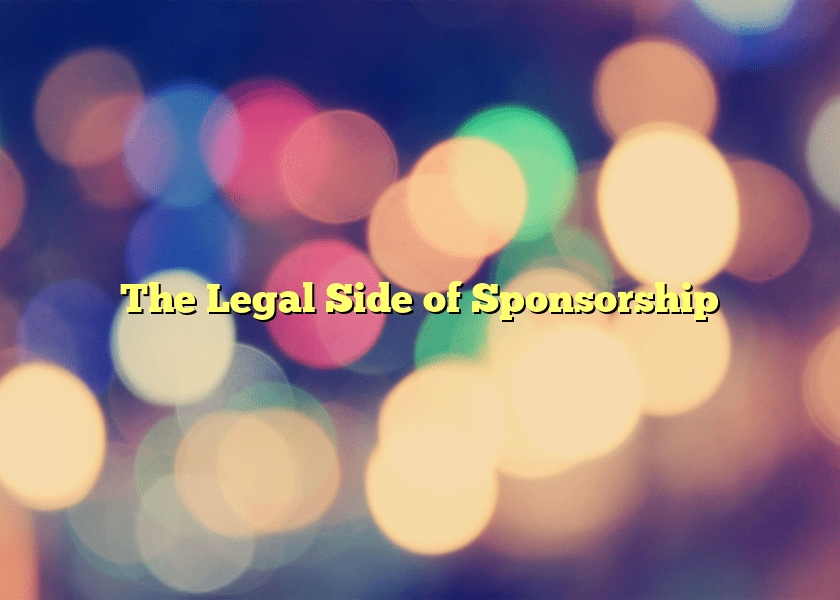The Legal Side of Sponsorship
Sponsorship, by nature, is a business affair; and as with anything that is in the arena of deals, partnerships and mergers, a legal agreement is always in the works. This is most especially practiced in sponsorship, since its form of business is through partnering with an individual or organization as a tactic for market exposure.
Protection is the key word when drawings up contracts are presented between sponsor and sponsee. This is to prevent any anomalies or set backs that may occur in the event that one party doesn’t reach the agreed upon aims.
To help in creating a legal agreement, below are guidelines and key points to consider when formulating a letter of agreement or contract between a sponsor and sponsee.
A guideline in agreement
It is important to always take a sufficient amount of time and very careful consideration when drafting a contract. This applies to all business ventures other than sponsorship a huge number of companies thrive in having partnerships. In any relationship, it is most important to think through such considerations in order to have something to ‘fall back’ on.
In sponsorship, a letter of agreement will usually be enough to seal the deal between sponsor and sponsee, but this will highly depend upon the value of sponsorship and the size of the company that is involved. If the value is very high, like that of major athletes and big time corporations, a contract is the choice most would go for.
In creating an agreement or contract, it is important to take into account the following points:
• It is best to always get a commitment in writing. A handshake or word-of-mouth agreement will never suffice.
• Write down everything that is discussed and agreed upon during sponsor-sponsee meetings
• It is good to take advice on that commitment that a sponsor or sponsee is getting into. There are consultants that specialize in these kinds of partnerships.
• An organization or individual should never commit to anything it/she/he cannot be sure to deliver. In short, promises that can’t be kept should not be made
• An agreement should be simple and direct in writing. It is best to avoid too much legal terms, although at times this cannot be done without.
The crucial point to understand when it comes to legal agreements is to have a very clear statement of what the sponsor and the sponsee has agreed to. Usually a lawyer will always point out any necessary areas in which have to clarified and put into more detail.
In order to get a view on what should be clearly stated and defined in any legal agreement or contract, the following list bellows breaks down what usually is considered between sponsor and sponsee partnerships:
• The nature of both sponsor and sponsee – whether the former is capable and relevant enough to support a person or organization; and whether the latter can live up to the needs of the sponsor in return
• Cash and benefits – this should be clearly defined as to what each party will be getting out of the partnership
• The actions involved for both sponsor and sponsee – this area should list down the roles of each party within the partnership.
• The length or contract term – The agreement or contract should also state how long such partnership between a sponsor and sponsee should last, and the terms of which a contract can be stopped or turn invalid
• Early exit – this part of the agreement is more of a ‘back up’ plan for each party, wherein if either fails to comply with its responsibilities and obligations, then there is a chance for the other party to exit gracefully.
